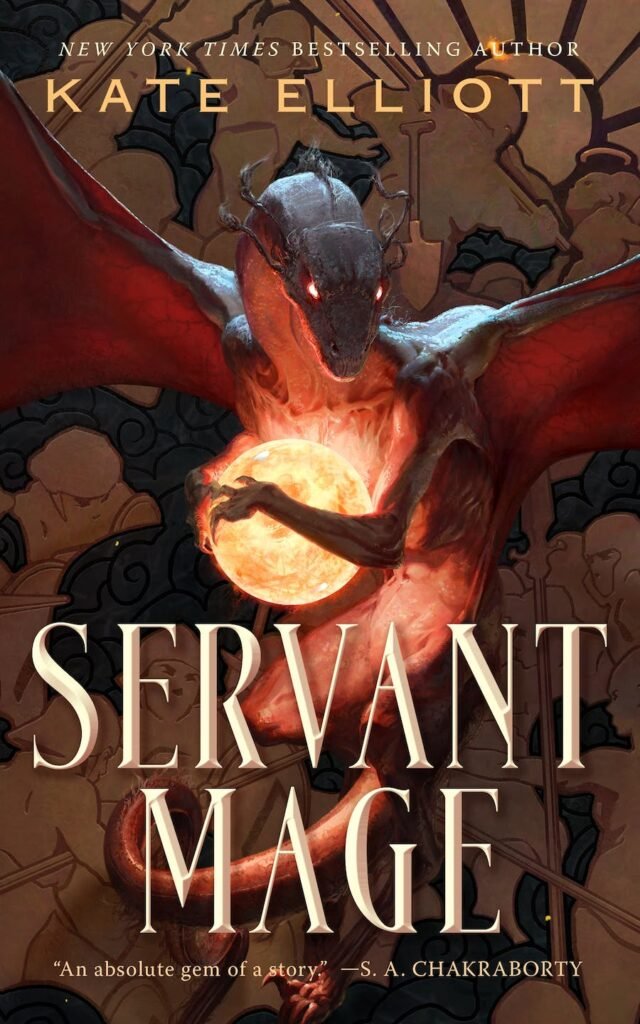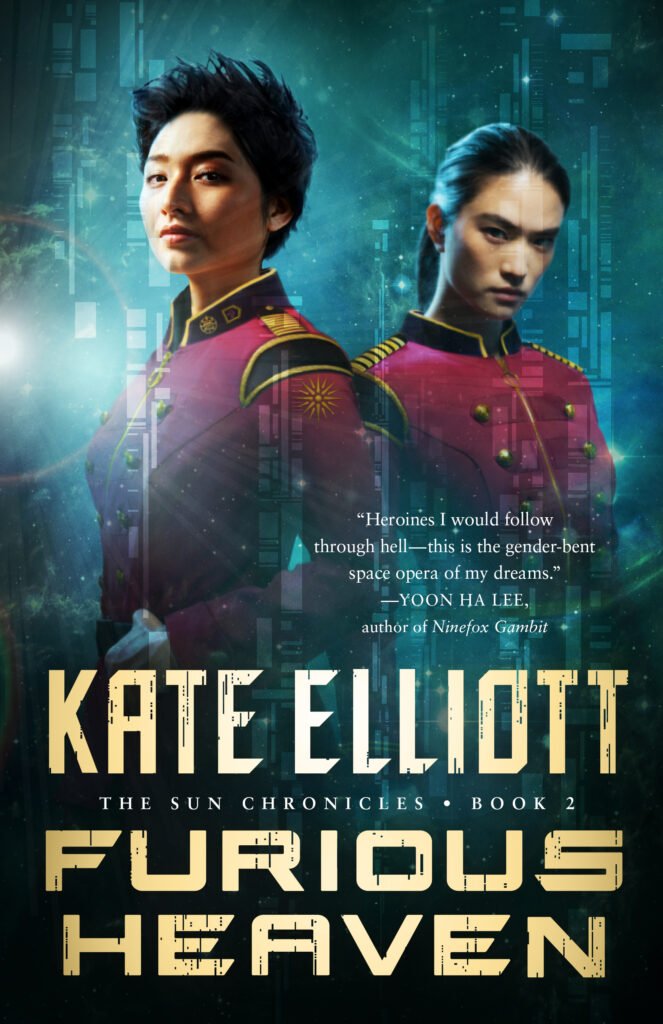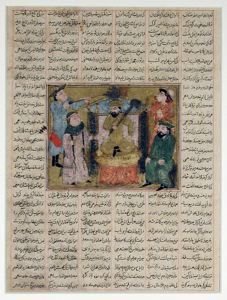My brain likes structure so I’m devising a set of instructions—a rubric, if you will—to help myself stay focused, effective, and determined through the 2025-2026 interregnum. I’m writing this for myself, and posting it as a form of accountability. My approach and goals will not match those set by another person, nor is it meant to. This is meant as a starting point, a place of branching questions, not as a definitive answer. If it is useful to others, then I’m glad. Good luck and staying power to us all.
In honor of FDR’s CCC, I’m calling my rubric the 5Cs:
- Cope/curate
- Care
- Connect
- Construct
- Challenge
- Cope/curate
I’m angry, and I’m going to stay angry, but a cold, determined anger isn’t the same as a flailing, helpless, ‘I can’t do anything’ outrage coupled with ‘there’s nothing that will work’ despair. Falling into an outrage/despair cycle hurts only me and has no effect on what is going on around me. To this end, I will set goals & limits for myself to encourage staying on course for the long haul.
How much news do I want to consume, which news, and does it matter at what point during the day or week that I consume it? If I read upsetting news in the morning, will that derail my entire work day? Then don’t read news in the morning. Wait until post-work, or even the weekend. Which news sources do I want to read? There’s so much good independent journalism that needs my support, the investigators doing the whistle-blowing on subjects many of us would otherwise know nothing about. I know people who have told me that they are simply going to stop reading the news for the next few years. That is also a way to cope; it is not one I choose, because I prefer to face what is going on, but people have different tolerances and what I want most for people is that they survive.
How do I want to use social media? Many people don’t use social media at all, and more power to them. In my case, I use social media to connect & occasionally to let off steam (I need that outlet too). But I don’t need to doom-scroll my way into giving up nor do I need to fan the flames of impotent outrage. Others can do that. I’m not interested. Limits may include scheduling the amount of time I allow myself to be on social media. Timing goals include things like posting in the mornings only if I have specific publishing related news and scrolling/reading only after I have completed work for the day. Will I stick to that? No, of course not. But if I manage a shift of habit more often than not, then I am ahead of the game. Crucially, I will focus on not letting the outrage/despair cycle eat up my creative energy that is better used for working.
Curation goals may mean muting or blocking people (both online and in real life) who bring too much negativity, doomerism, or inter-coalition factionalism to their online vibe. As Ben Franklin said, “If we don’t hang together, we will assuredly hang separately.” That includes not obsessively reading the comments of vile people who cheer on cruelty; no need to wash my eyes in those toxins. Block and move on.
I think it is worthwhile to think ahead of time about what may work best as a coping and curating strategy, and to stay open to adapting it as things change. This is what novelists mean by agency. I can’t stop the latest appalling executive order (or law, or court order) but I can control whether I let despair and rage obliterate my ability to live day to day, and whether I focus on what I can do and the things I do have (which are real and important). I will use my energy for what I can accomplish.
To conclude, I remind myself that when people declare they are acting in order to harm others, to create suffering, to make people cry, and especially when they make such declarations with a sense of pride, strutting, bullying glee, that they are speaking of their intention to act evilly. What we are dealing with is not political disagreement but intent to cause suffering. Framing the situation in that way matters. Throughout history people have struggled through terrible ordeals. Many do not survive, but each of us is here today because some of our ancestors survived those times. I honor the struggle and persistence of those who came before by choosing to move forward with determination now.
- Care
Self-care and care for others is critical when we are under stress. Any individual has to make sure they are functioning at a basic level, and once we feel secure (enough), we can reach out to people who need help and support.
I don’t know how to stay this strongly enough: take care of yourself, in whatever ways work best for you and which you can manage. There is no correct answer on to how to do this, no one true path. Each person has to figure this out for themselves (and their strategies may change over time).
My self care falls into two modes:
- how to bleed off anger, anxiety, and despair, and
- how to build positivity, gratitude (yes, that buzz word!), and joy.
It isn’t stupid to be grateful and it isn’t callous to seek joy in moments or hours or days or weeks or years of our finite lives. Almost all people wish for joy ,for themselves and others. We don’t help people who are suffering by being miserable ourselves, and specifically not when our misery doesn’t do a single thing to alter their suffering. I would go so far as to say misery and outrage are a bit selfish on the part of a person who is not suffering somehow acting as if their public performance of these emotions is more meaningful than actual action being taken to alleviate or expose suffering, harm, and death. This doesn’t mean pretending nothing bad is happening but rather letting others not dictate my response. Lifting up takes strength, and thus lifting ourselves and others is part of our task.
To bleed off stress and fear, I use strategies like the “five minute a day worry rule” in which a worrier (like me) assigns a specific time in which I am allowed to worry. I can worry for five minutes at 5 pm!
To that end, as we enter what is bound to be (yet another) appalling period in USA history (because, to be clear, many appalling things have happened in USA history), I have dictated into my phone an extensive list of many of the things I can imagine happening in the next two years, ranging from the small insults to the crimes-against-humanity scenarios. After talking non stop for twenty-five minutes, I sent the long rambling and likely incoherent file to myself. I haven’t re-read it. In truth, just doing it gave me a weird sense of peace; I laid out my anxieties, I spoke them aloud. My hope is that this “worry email” will help redirect my anxiety; “oh, I already worried about that.” Let my rambling words bleed my fears and let the universe take them so that there comes less harm, less suffering, more peace, and more justice and mercy, for all creatures on Earth.
To build stamina and determination, I will continue my usual exercise, reading (a lot more reading), watching fave shows, eating ice cream, baking, yoga, massage (as I can afford it), appreciating a beautiful view of the ocean, the trees on my walk, and stars in the sky at night.
As for my work, I am building in leeway in terms of my writing goals. Didn’t manage 2000 words today? Then 1000 is good, all things considered. Couldn’t get to 1000? Okay, how about 500? Really struggling? Then 100 words, bad or good, is a win.
Be kind to yourself. Prep to be kind to yourself. Think about it in advance. Plan for kindness; write it onto your mental slate. Cut yourself—and those around you—the slack you need to keep moving forward.
It is just as important to prioritize care for others, especially at a time when many people may have additional needs and increased stressors. Reach out to family and friends and colleagues, and to strangers, if one can, to see what people need. I will talk more about this below.
Care is a two way street, or perhaps better to say it is a multi-lane intersection. We can be both the helpers and the helped. Sometimes the most positive and strengthening form of self-care is to care for and aid others. Community, cooperation, shared work, altruism: these are all things that literally make people feel more positive about themselves, their communities, and the world.
- Connect
As an introvert, I have a bit of a hermit tendency, and that’s okay; solitude helps me recharge. At the same time, for many people (I venture to say most people), connections with others make us healthier. I mean that literally. For example, older people who care for pets, and older people who have more weekly contact with others (rather than live isolated in a small apartment, for example) show better health/age outcomes.
We are band animals. By that I don’t mean that everyone must want to be around people all the time (I don’t want to be!), but insofar as you can, I hope we all have people we want to see, talk to, hang out with (in person or via Zoom), play an online or tabletop RPG with, or go for a hike or golfing with, watch a tv show, sit on the porch, laugh over the phone, cook and eat a meal, go shopping together, and so on.
Particularly in a time of crisis, as we are in now, isolation kills. We need each other.
I will find ways to connect. I will remind myself that it is good for me to go to dinner with friends instead of “writing two more pages” on some random project. I will use social media like Bluesky to connect with people, build networks of support and encouragement, which we are going to need. I can also connect with organizations doing crucial work to support human rights, civil rights, and environmental rights, as I find organizations that fit with what I have to offer.
During the pandemic I ran several seasons of a Zoom “writer discussion” series under the auspices of SFWA called Narrative Worlds. Narrative Worlds ran for four seasons with great guest writers, and I loved doing it (shoutout to SFWA tech support Nathan Lucas and C J Lavigne), and I’m glad I did it, which is why I am mentioning it here. Degraded search engines aside, libraries and online resources hold a wealth of fascinating information that many people can now access and share. We can share with each other.
There’s no telling how even the smallest or larger point of connection will make a difference for someone else or for you. We can’t predict the ripples from any tossed stone, however trivial it may seem to the onlooker. If I can’t affect the big picture, I can make a difference on the ground, right here and right now, and these actions matter deeply to human well-being.
- Construct
It is easy to wreck something. An angry toddler can with one impulsive swipe knock over a painstakingly built castle made of blocks. We are going to see a lot of wrecking behavior in the coming months, destructive actions driven by grievance, bigotry, the confluence of weakness and cowardice driving (mostly) men to hurt others because it makes them feel big to do so.
Our job is to build. Often it will be repair work, and that sucks, because some sick man-baby has broken something that was working well. But we must still make those repairs, however hasty or crude or makeshift they may be. And just maybe it can be better, as and when we can manage it to be so. It might be tomorrow. It might be next decade. Times change. The future is not determined.
So many people are doing innovative work, unheralded, sticking with it year after year. For example, I subscribe to the Climate Action newsletter which highlights work that people around the world are doing with optimism and resolve.
I have work to do, too. That’s why it matters that I focus my energy away from impotent outrage and despair and into my own work, which happens to be writing: novels, short fiction, non fiction essays (like this one), craft essays, a few workshops and interviews/podcasts, and so on.
Each time a person is lifted up, or given solace or a moment of peace or joy, from a work of art—or from any kind of work, even from a simple “thank you” that acknowledges their existence or something they have done—this moment and that “thank you” expand the network of connection and construction that is the human way forward, and the only way forward that’s ever been. We are the network that supports each other. We build for our present and for our future. Keep building.
- Challenge
First, accept humility. Not only do I not know everything, I don’t really know that much, and so I must always seek to learn and to listen. This is true of living life in general, and how much more true when faced with a time of crisis and cruelty. Now is an excellent time to listen and learn from those people, both past and present, who faced (and are facing) crisis and cruelty and have something to say about how we can live and what we can do during such times.
I will speak up and push back in ways that I believe will be meaningful. This might be as simple as saying “I don’t agree with [statement] because [answer]” during a conversation. It might mean refusing to comply with a bullying demand that is unjust and which depends on your being cowed but which has no other force behind it. It might be writing a letter to your congressperson or volunteering for Vote Riders or taking an online class in Bystander Intervention or any other organization that needs volunteers like Meals on Wheels or whatever local or nationwide work you are interested in. It might mean donating to an organization that is doing critical legal work for a vulnerable population or effective support/infrastructure work like a food kitchen.
Some may choose to pick one issue to dig down into as their point of specialty for activism (obviously many organizations already do this). Others will devise different strategies, appropriate to their inclinations, and these strategies may change over time for every individual. The thing you are doing might be something you can’t talk about online.
I will challenge myself. Comfort is a coping and caring device, yes, but there are times when I need to move into discomfort, to look with open eyes upon humanity’s inhumanity toward the most vulnerable and marginalized. To push myself to try things I’m not sure I can do. To ask questions, or receive answers, that aren’t easy or palatable. To seek to understand how people time and again have suffered, died, survived, and pushed back against authoritarianism and coercion. To live with this as also being part of the human condition, but never to normalize it or make excuses for it, always to be certain in my mind of the truth that such actions are wrong and that I should always defy them however I can, even if any one act of defiance may be as small as the flutter of wings or as large as a massive global strike.
It is also vital to remember that sometimes (too often) people push back simply by surviving and refusing to give up.
Don’t give up. You matter. I matter. We matter. Things do get worse, and all too often they get much worse. Yet never forget that people have come back from much worse (although never all of them; far too many get lost along the way).
Never forget that everywhere in the world there are people working at the local or regional level to create more equitable systems, healthier outcomes, ecologically sound changes in how humans approach our Earth, some peace and more joy.
This is the challenge we wake up to every single day, whether in the smallest personal sense or the largest global sense: A better world is possible.









